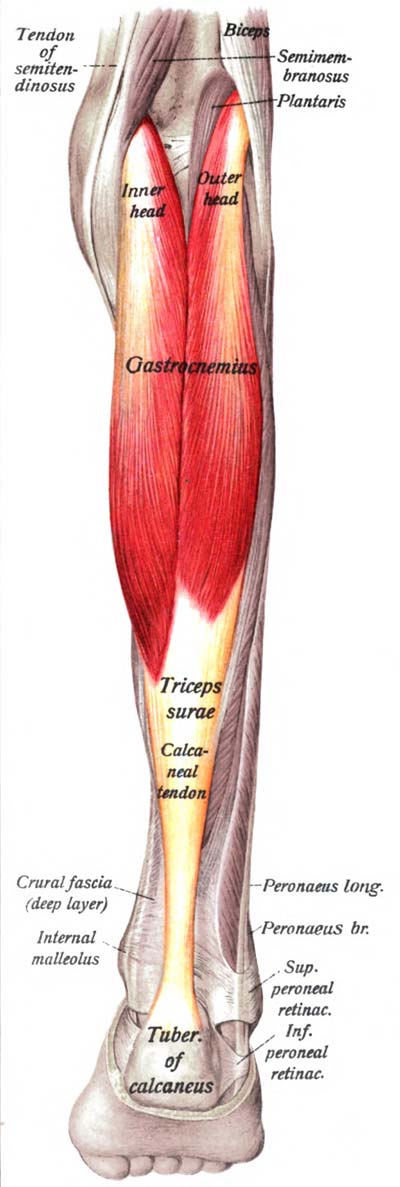gastrocnemius

The gastrocnemius is the largest, strongest, and most superficial of the calf muscles. It arises from the distal head of the femur by two heads. The lateral head originates at an impression of the lateral surface of the lateral condyle of the femur. The medial head springs from a rough, raised area on the popliteal surface of the femur above the medial condyle. Each arises from the bone mainly by a tendon which spreads out over its superficial surface and give origin to the short fibers of the muscle-belly. The two fleshy bellies thus swell out as they descend, and near the middle of the leg they end in a thin, aponeurotic tendon, which runs up on the deep surface of each. They do not blend with each other, but are separated by a furrow in which the sural nerve and the short saphenous vein lie. The medial belly is slightly larger and extends a little lower than the lateral belly.
The medial head is separated from the back of the capsule of the knee joint by a bursa which may communicate with the cavity of the joint and with the semimembranosus bursa. The lateral head often contains a small sesamoid bone (the fabella) opposite the lateral condyle; occasionally it is separated by a bursa from the capsule of the knee joint. The common tendon of the two heads joins the tendon of the soleus to form the tendo calcaneus a short distance below the middle of the leg.
The gastrocnemius is supplied by the medial popliteal nerve. With the soleus, it is a powerful plantar flexor of the foot that comes into action in maintaining the standing position and in providing the necessary impetus for walking. The origins from the femur imply that it may also act as a flexor of the knee, and it does so act to assist the hamstrings against resistance; but the two actions cannot be carried out efficiently at the same time.
The action at the knee joint is important after supracondylar fracture of the femur; the gastrocnemius rotates the broken fragment backward, and treatment is therefore carried out with the the knee bent to relax the muscle.


